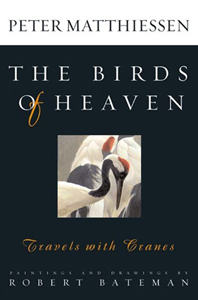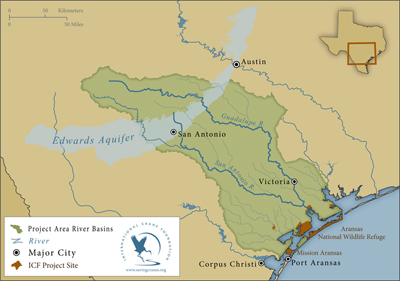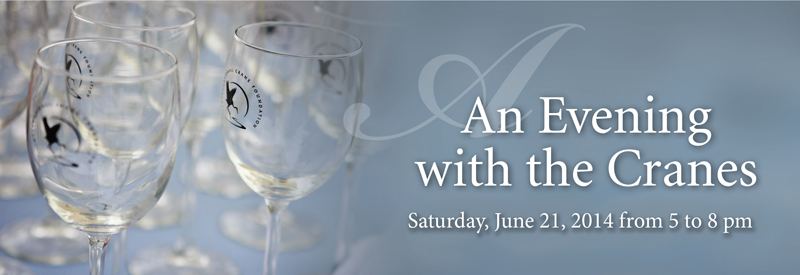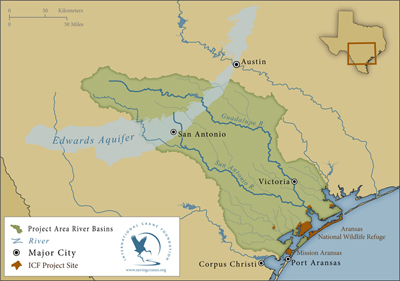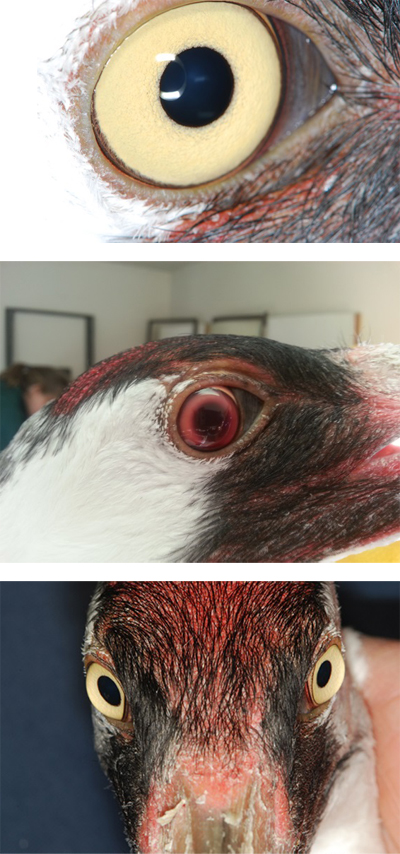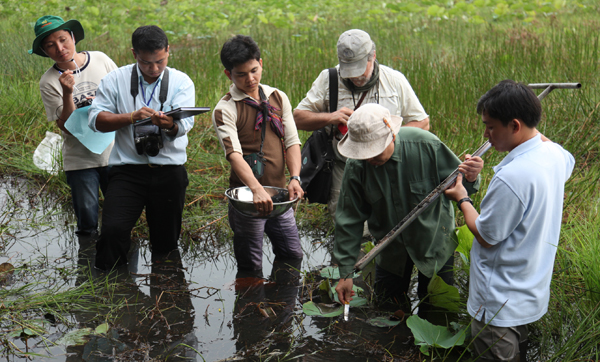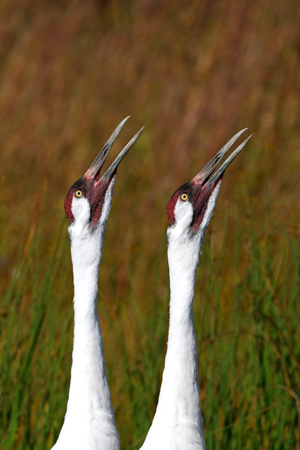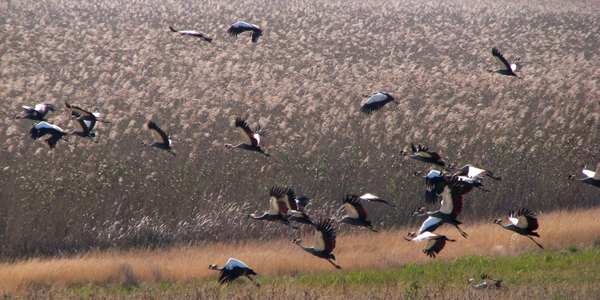 With sorrow, we say our goodbyes with gratitude for the most eloquent of voices for the cranes. Peter Matthiessen – naturalist, explorer, spokesman for those with little voice, and remarkable writer – died of leukemia on April 5, 2014 at his home on New York’s Long Island.
With sorrow, we say our goodbyes with gratitude for the most eloquent of voices for the cranes. Peter Matthiessen – naturalist, explorer, spokesman for those with little voice, and remarkable writer – died of leukemia on April 5, 2014 at his home on New York’s Long Island.
Category: Newsroom
Travels with George: Texas 2014

Late February brought me to Texas to attend three evening functions in Houston and then to participate in the Whooping Crane Festival in Port Aransas, beside the Gulf of Mexico about 200 miles southwest of Houston.
ICF is Celebrating Party for the Planet!

On Saturday, April 26th, 2014, bring your family to the International Crane Foundation, where we are celebrating Earth Day with our Party for the Planet™.
You're Invited to An Evening with the Cranes 2014
 Gather your friends and join the International Crane Foundation for our fifth annual Evening with the Cranes on Saturday, June 21 from 5 – 8 pm! Described as earthly elegant, this outdoor event at our headquarters in Baraboo, Wis. is an opportunity to meet the dedicated people that work at ICF and learn about our global conservation programs.
Gather your friends and join the International Crane Foundation for our fifth annual Evening with the Cranes on Saturday, June 21 from 5 – 8 pm! Described as earthly elegant, this outdoor event at our headquarters in Baraboo, Wis. is an opportunity to meet the dedicated people that work at ICF and learn about our global conservation programs.
Texas Whooping Crane Wintering Area May be Affected by Oil Spill
 ICF is concerned about the Kirby Inland Marine oil spill that occurred in Galveston Bay, Texas on March 22. If prevailing winds and currents drive the oil spill southwest along the Texas coast, there may be a possible landfall of spilled oil along Matagorda Island and adjacent bays later this week. This could potentially put the endangered Whooping Crane at risk.
ICF is concerned about the Kirby Inland Marine oil spill that occurred in Galveston Bay, Texas on March 22. If prevailing winds and currents drive the oil spill southwest along the Texas coast, there may be a possible landfall of spilled oil along Matagorda Island and adjacent bays later this week. This could potentially put the endangered Whooping Crane at risk.
ICF and UW-Madison School of Veterinary Medicine Treat Injured Whooping Crane

An old English proverb states “the eyes are the window to the soul.” In my line of work, the eyes are sometimes a window into the health of a patient. Though the eyes may not be the most prominent feature of cranes, compared to raptors for instance, the cranes do show beautiful diversity in eye color, and have a predictable shape and relationship to the form of the skull. When changes occur in this presentation, the observant among us know something could be wrong.
Notes from the President
 Midway along our journey from New Delhi to Bharatpur, we pulled our bus off the highway and leapt out to scan for birds and other things that might flash in our binoculars and cameras. At first glance, these intensively farmed lands, flush with people everywhere, didn’t seem a good prospect for wildlife viewing. But as the small wetlands dotting this landscape came deeper into focus, species after species appeared — a wealth of ducks, cormorants, ibises, spoonbills, storks, herons, kingfishers, and shorebirds.
Midway along our journey from New Delhi to Bharatpur, we pulled our bus off the highway and leapt out to scan for birds and other things that might flash in our binoculars and cameras. At first glance, these intensively farmed lands, flush with people everywhere, didn’t seem a good prospect for wildlife viewing. But as the small wetlands dotting this landscape came deeper into focus, species after species appeared — a wealth of ducks, cormorants, ibises, spoonbills, storks, herons, kingfishers, and shorebirds.
University Network Study of Persistent Organic Pollutants in Mekong River Basin – Now Published

In July of 2010, the International Crane Foundation (ICF) was contacted by the US State Department with a request to survey Persistent Organic Pollutants (POPs) in the Mekong River Basin and to study the possible impact of POPs on human health and the environment.
Whooping Cranes Need Your Voice
 The International Crane Foundation (ICF) is deeply concerned about the recent reports of Whooping Cranes being shot in Kentucky and Louisiana, adding to the frightening series of shootings of these highly endangered birds.
The International Crane Foundation (ICF) is deeply concerned about the recent reports of Whooping Cranes being shot in Kentucky and Louisiana, adding to the frightening series of shootings of these highly endangered birds.
Largest Protected Environment in South Africa Declared
 A major milestone for the conservation of South Africa’s grasslands was reached on January 22, 2014 when 60,230 ha of South Africa’s Lakes District, Chrissiesmeer, was proclaimed as a Protected Environment!
A major milestone for the conservation of South Africa’s grasslands was reached on January 22, 2014 when 60,230 ha of South Africa’s Lakes District, Chrissiesmeer, was proclaimed as a Protected Environment!

